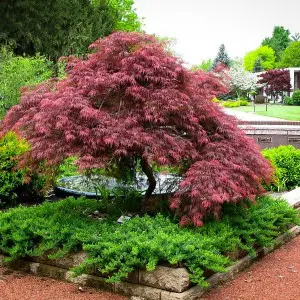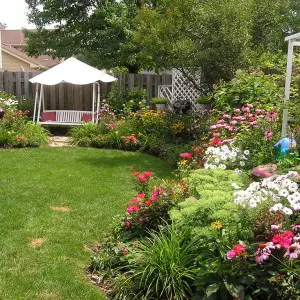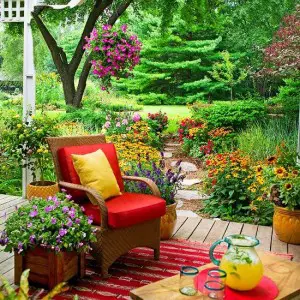Britain has only a narrow range of native flora (the Ice Age left it quite barren). –The Atlantic Monthly, March 1966
Few gardening topics generate as much passion and misinformation as the proper role of native plants in the garden. Much of our current prejudice against exotic perennials is owing to the usual confusion that comes from tossing about labels in place of reasoned arguments. “Native” plants are native only in their place of origin. If our native coneflower were planted at Sissinghurst it would show up as an exotic in that garden’s plant listings, just as most everything else does at Sissinghurst and everywhere else in England, for that matter. Occasionally a native plant moved out of its natural habitat finds itself, like a pro baseball player sent down to the minors, too tough for the competition; it runs rampant–a certain virulent strain of Lythrum leaps to mind–and ends up badly tarnishing the reputations of pro athletes and foreign imports generally.
Another confusion is this: The term “native” often is used to mean prairie, but a prairie can be any number of things depending on where you live on the planet. Massed planting of low-maintenance grasses, lately being referred to as “the New American Style,” is really a middle European and Russian phenomenon. The American prairie, on the other hand, is notable for its variety of plants, including flowering plants–the black-eyed Susan, gayfeather, blazing star, milkweed, goldenrod, coneflower, and so on.
The renowned native plant expert and garden designer C. Colston Burrell welcomes any plant in his own garden that behaves itself, looks well, likes the “droughty” and heavily alkaline soil, and adds to the diversity and balance of his tiny but very lively ecosystem. Being a native plant expert, of course, it’s only natural that he sticks mostly with natives. A tour of his garden is an education in how diverse our particular native population is, and how vast the difference between a garden and a truly “natural” landscape is untouched by our human affinity for order and beauty.
Burrell strives to create a happy family of plants, people, and all the other living organisms that gardens can and, in his view, really ought to sustain, from birds and bees to butterflies. There is a bog for plants that like their feet wet, a pond for aquatics, a retaining wall for sun worshippers, a sandy area set apart from the rest for “the thugs.” It is all highly organized–a garden made by a gardener. Burrell is the first to admit that esthetic considerations rank almost as high on his own affinity list as ecological ones.
There are good reasons to go native, and good reasons not to.
PROS
 Plants native to a region have adapted to its climate and soil. Many have deep roots, allowing them to probe for scarce moisture and nutrients. They are tough and carefree once established.
Plants native to a region have adapted to its climate and soil. Many have deep roots, allowing them to probe for scarce moisture and nutrients. They are tough and carefree once established. A diverse culture of native plants usually creates a balanced ecosystem–from predators to pollen. This further enhances the garden’s self-reliance.
A diverse culture of native plants usually creates a balanced ecosystem–from predators to pollen. This further enhances the garden’s self-reliance. A garden of natives reflects your heritage. Your garden isn’t a variation on tired themes, but truly “about”your part of the world.
A garden of natives reflects your heritage. Your garden isn’t a variation on tired themes, but truly “about”your part of the world.
CONS
 Some exotics have lovely manners when visiting strange lands–certain ornamental grasses, for example. Queen Anne’s Lace and chicory make a lovely “prairie-like” combination. You won’t find them on our recommended plant list, though, as they’re not native. Why leave them out?
Some exotics have lovely manners when visiting strange lands–certain ornamental grasses, for example. Queen Anne’s Lace and chicory make a lovely “prairie-like” combination. You won’t find them on our recommended plant list, though, as they’re not native. Why leave them out? Native plantings take patience. It’s best to start from plants, not seeds. Don’t expect wonderfully pleasing results for three years.
Native plantings take patience. It’s best to start from plants, not seeds. Don’t expect wonderfully pleasing results for three years. Many natives are fine-textured or rough-looking and greatly benefit from being paired with plants of contrasting form and texture.
Many natives are fine-textured or rough-looking and greatly benefit from being paired with plants of contrasting form and texture. 



